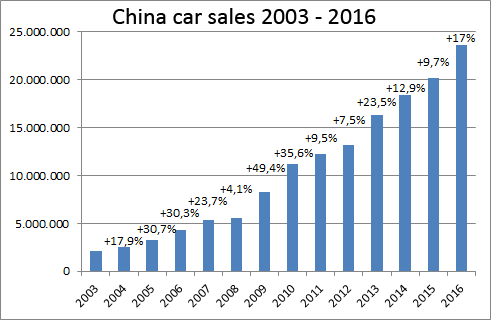And it's going to go much higher. The US has Hell to pay for all the Fed brrr-ing.It seems so, Chinese 10yr yield is only 2.68% while the US is 4%!
You are using an out of date browser. It may not display this or other websites correctly.
You should upgrade or use an alternative browser.
You should upgrade or use an alternative browser.
Chinese Economics Thread
- Thread starter Norfolk
- Start date
Never bet against the 5 year plan.Eric Li giving out his view of China's economy strategic direction in a recent interview.
Video by an economist claiming that China's economy is smaller than reported, based on night-light data. He's not one of the usual China collapse guys either. Any thoughts beyond reflexive dismissal? It does seem like they're trying to use a relatively broad cross-country method to explain specific within-country differences. Nonetheless, what could explain the slow night-light growth?
He claims light intensity, which is related to electric consumption/production, is a good proxy for GDP.Video by an economist claiming that China's economy is smaller than reported, based on night-light data. He's not one of the usual China apse guys either. Any thoughts beyond reflexive dismissal? It does seem like they're trying to use a relatively broad cross-country method to explain specific within-country differences. Nonetheless, what could explain the slow night-light growth?
If electricity is the metric for GDP, then why is he ignoring that China produces double the amount of electricity of the US?
Last edited:
Ok, auto sales data is ALSO highly correlated with economic growth.Video by an economist claiming that China's economy is smaller than reported, based on night-light data. He's not one of the usual China collapse guys either. Any thoughts beyond reflexive dismissal? It does seem like they're trying to use a relatively broad cross-country method to explain specific within-country differences. Nonetheless, what could explain the slow night-light growth?
Here's China's car growth data, having outpaced GDP growth every year for 10+ years.

My car sales index says China's GDP is far underestimated. Prove me wrong?
China's electricity production is greater than entire G7, yet supposedly the GDP of China is lower than a single G7 country US. another point that says China's GDP is underestimated.
Finally, China has more optical recon satellites than the US, so at minimum Chinese government also has this data. How come nobody brought this up? I mean he's talking like only US has satellites or something?
I think one reason for the US having more light intensity is just the sheer amount of urban spread in the US because of car centrist culture. Because the US is so car dependent, you have huge amounts of land area covered with parking lots, and roads, and all of those are illuminated. How much GDP does a parking lot contribute?
Later they'll be using light intensity per capita.I think one reason for the US having more light intensity is just the sheer amount of urban spread in the US because of car centrist culture. Because the US is so car dependent, you have huge amounts of land area covered with parking lots, and roads, and all of those are illuminated. How much GDP does a parking lot contribute?
Not just that, from the original paper I think their light intensity data is only 6 bit, so 0-63. That is insufficient to capture extremely bright lights such as the high intensity emissions of a megacity and is biased towards medium density suburbs. Actual emission intensity can differ by orders of magnitude.I think one reason for the US having more light intensity is just the sheer amount of urban spread in the US because of car centrist culture. Because the US is so car dependent, you have huge amounts of land area covered with parking lots, and roads, and all of those are illuminated. How much GDP does a parking lot contribute?
Video by an economist claiming that China's economy is smaller than reported, based on night-light data. He's not one of the usual China collapse guys either. Any thoughts beyond reflexive dismissal? It does seem like they're trying to use a relatively broad cross-country method to explain specific within-country differences. Nonetheless, what could explain the slow night-light growth?
The us has national debt of 31 trillion and unfunded liabilities of 100s trillion +
China has 4 trillion in debt and ? Unfunded liabilities. I think one country may have more funny business going on than the other...
It's less that China is underestimated and more than US is overestimated. America for example will count insurance payouts as transactions, no matter how overvalued these items are. Meanwhile, China doesn't count many newer sectors such as e-commence, despite having the largest such sector globally by far, because they don't mainly use GDP as targets, rather focusing on public polling about improving life quality.Ok, auto sales data is ALSO highly correlated with economic growth.
Here's China's car growth data, having outpaced GDP growth every year for 10+ years.

My car sales index says China's GDP is far underestimated. Prove me wrong?
China's electricity production is greater than entire G7, yet supposedly the GDP of China is lower than a single G7 country US. another point that says China's GDP is underestimated.
Finally, China has more optical recon satellites than the US, so at minimum Chinese government also has this data. How come nobody brought this up? I mean he's talking like only US has satellites or something?
American auto sales should be overrepresented due to lack of public transport, while China has very extensive public transport. Yet, China still has 2x larger auto market.
And of course when evaluating industrial output, logistics capability, energy output etc. it is an even greater gap.
I think in reality if US economy was evaluated by the far more austere CPC economists, it would not be 80% of China's, as officially claimed, but more like 50-60%.
